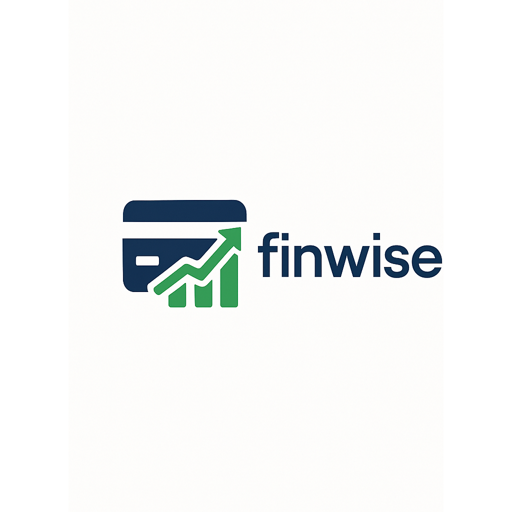Get Ready For America's Booming Credit Card Crisis
American consumers are under increasing financial stress as credit card delinquency rates hit the highest level in more than a decade. It is important to understand why we are seeing this trend and how it will effect our financial health as we roll into 2025 and beyond.

New data from the Federal Reserve and major credit agencies — reported this week by The New York Post — shows that the United States is now seeing levees of credit card delinquencies that haven’t been witnessed in nearly a decade since the end of the 2008 financial collapse. As of early 2025, more than 3.5% of credit card accounts are considered seriously delinquent — which in the industry lingo means payments are 90 days or more overdue.
That spike marks a pronounced departure from historical low levels of delinquencies in the early years of the COVID-19 pandemic, when stimulus checks, paused student loan payments and reduced spending allowed many households to keep their heads above water financially.
Why Are Delinquencies Increasing Now?
There are a few key drivers for the spike in missed payments:
Lingering Inflation: Prices have fallen from their peak in 2022, but the cost of living is still climbing. Necessities such as housing, food and health care are still squeezing household budgets, leving less extra money to pay credit card bills.
High Interest Rates: The Federal Reserve’s increasing rate of interest hikes from 2022-2024 have driven average credit card APRs to more than 20%– the most ever. That has made carrying a balance more expensive, making it more difficult for consumers to catch up once they start to fall behind.
Student Loan Repayments Restarted: Federal student loan payments resumed late in 2023, after a years-long hiatus, for millions of Americans. We now owe that much more in rotating debt and don’t have the income to pay it down.
Slackening Job Market: Credentials resumé suivante While the unemployment rate is low, wage growth has decelerated and some industries are cutting jobs. For many people, even a short-term loss of a job or reduction in hours can lead to financial instability.
Who Is Being Hit the Hardest?
Although rising delinquencies are hitting all demographics, here are some more vulnerable groups:
Younger borrowers (ages 18-34): This cohort frequently earns less and has thinner credit, which makes them more at risk from higher rates, and from unforeseen financial waves. They are now seeing the sharpest increase in delinquencies.
Low-wage earning households: Those making under $50,000 subject their delinquent accounts at a higher rate. These are generally consumers who use credit cards for necessities rather than for extras.
Southern consumers: Credit card delinquencies have risen most sharply in states such as Mississippi, Louisiana and Alabama, according to TransUnion, probably reflecting lower average incomes and less access to financial services.
Who Is Being Hit the Hardest?
Although rising delinquencies are hitting all demographics, here are some more vulnerable groups:
Younger borrowers (ages 18-34): This cohort frequently earns less and has thinner credit, which makes them more at risk from higher rates, and from unforeseen financial waves. They are now seeing the sharpest increase in delinquencies.
Low-wage earning households: Those making under $50,000 subject their delinquent accounts at a higher rate. These are generally consumers who use credit cards for necessities rather than for extras.
Southern consumers: Credit card delinquencies have risen most sharply in states such as Mississippi, Louisiana and Alabama, according to TransUnion, probably reflecting lower average incomes and less access to financial services.
The Wider Economic Impact
A persistent increase in delinquencies is a threat not only to those borrowers, but to the broader economy:
Credit tightening: In response to rising defaults, lenders may tighten access to credit or raise requirements for qualification. This in turn can make it more difficult for consumers to borrow in the future, and slow down consumer spending, a linchpin of the United States’ economic growth.
Bank losses: Banks could possibly have more write-offs and bad-debt provisions, which could darken profit estimates and investor sentiment.
Consistently low consumer confidence: When more Americans are in debt, there is an increased likelihood of fearing for their financial future which can make people less likely to buy on non-essentials.
What Consumers Can Do Keep Ahead
Given these challenges, here are some things consumers can do to defend themselves:
Budget realistically: Keep close tabs on your income and spending. Figure out what to cut back on and make sure you can cover minimum payments so that you don’t end up falling behind.
Pay more than the minimum: Whenever possible, paying more than the amount due cuts interest costs and decreases balances more quickly.
Try a balance transfer: Some credit cards have 0% APR balance transfer offers that last 12–18 months. This can be a reprieve for people with good credit to become debt-free while they pay it off without interest.
Evade new debt: Pause and process before taking on new debt, especially high-interest loans or new credit cards — unless you must.
Get credit counseling: Save this option for last, if possible: Nonprofit credit counseling organizations have been known to develop credit management plans tailor-made to your financial situation, which can include lower interest rates and waived fees from lenders.
How Credit Card Issuers Are Responding
Big credit card companies are already changing course in light of these changes:
Modeling increased risk: Lenders are getting better at their risk modeling to determine who may be a greater risk to default.
Narrower offers: Issuers are starting to focus on consumers with higher credit and stronger income features.
Hardship programs: Many issuers are extending hardship programs, giving struggling cardholders access to temporary forbearance or reduced payment plans.
The moves attempt to offset profits against the necessity of keeping customers and not triggering mass defaults.
What to Look for in the Next Few Months
Though there are long range of uncertainties of that downturn, most economists agree a solid repetition of 2025 will be hard for consumer credit. A number of factors could shape the result:
Possible Fed rate cuts: While it may be a long-awaited policy move by the Fed, the Federal Reserve could, if inflation continues to moderate, start cutting interest rates, which would mean lower APRs for borrowers and some much-needed relief.
Economic stabilization: A better labor market or more government stimulus could give households resources to manage their debts more effectively.
Greater financial literacy: With more press coverage of debt, more consumers could look for financial education and resources to more effectively manage their credit.
Our Post

High Interest Rates, Credit Cards and the U.S. Consumer: What to Know in 2025
The Note: How Decelerating U.S. Economic Growth Affects Using Consumer Credit


